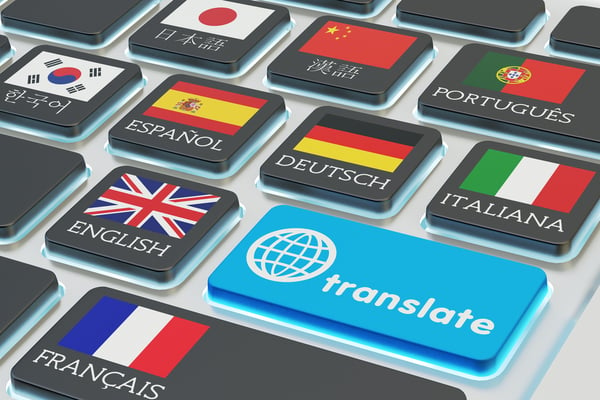We’re taking a deep dive into all of the advantages of having a website in multiple languages, from increasing reach to localising your business and improving its rankings. This, coupled with interesting facts and best practices for multilingual sites will set your business on the path to expanding in the global market with a valuable competitive edge.

Did you know?
- There are over 7,000 languages spoken worldwide
- 75% of the world’s population prefers to buy things in their own language. By extension this translates to their preferences when it comes to what they listen to, read or search for
- English is regarded as the global language and subsequently most of the content available on the internet is in English
- English is spoken by 25% of the world, the majority of which are not native speakers
- The other most spoken languages in the world also represent the most frequent languages found online, namely Mandarin, Spanish and Arabic. However, these figures are disproportionate to the population figures, for instance 2% of the content online is in Mandarin, yet it is spoken by 1 billion people
With those figures in mind, here are the advantages of having your website available in multiple languages:
Expand your Reach
An obvious advantage is that if your business speaks more languages, you’ll be tapping into more markets. There is great advantage in being able to ‘speak someone’s language,’ a figure of speech which is indicative of the value of understanding. This is beneficial for both the business and the customer on your website. Multilingual businesses have the advantage of expanding their global footprint and gaining a competitive advantage. You’ll be reaching the many people online who are not being catered to (as pointed out in the points above), reaching undersaturated markets. This will help to remove any language barriers and improve the communication between your business and its customers, suppliers, employees and partners. It is therefore an asset that can serve you both internally and externally.
Get Localised
The economic epicenter of the world is shifting, heading in an easterly direction. By having different languages available, you are preparing for this global shift. In an ever growing global marketplace, you can also focus on regional areas. The Middle East, for example, is diverse and complex, with 60% of the population speaking Arabic. Getting localised is all about gaining understanding of these expanded target markets and catering to their specific needs with local marketing strategies. Having multiple languages available on your website will expand your presence in those areas, as well as increase the trust and credibility of your business. It is also a key way of showcasing your ability to provide sophisticated solutions to your customers.
Improve your Rankings
The information you conceptualise and publish on your website is done so with the aim of providing value. Having different languages available naturally increases that value, which will translate into your online rankings too. You’ll be able to drive more traffic to your website and to provide an optimal user experience. This results in higher customer satisfaction, thereby improving both your metrics and sales. Simply put, increased accessibility leads to a bigger audience and more conversions. This alone will improve your ranking in SERPs (search engine result pages). With an SEO (search engine optimization) strategy in place, you can incorporate keywords and links to ensure your website is functioning optimally.
Best Practices for Multilingual Websites
The truth is, offering your website in multiple languages requires an investment. While software can perform the job of a translator with more time and cost effectiveness, there are some factors worth noting, such as:
- Integration: Are you going to offer other mediums or open other communication channels in this language, for example your social media? Content marketing is an effective and related method, though one needs to ensure that the content is developed in order to meet the needs of the targeted customers (as it may differ from the English speakers), as well as the idiosyncrasies of the language are well incorporated.
- For SEO: You’ll need to have dedicated URLs that include language detectors. This will ensure that the content is not considered as duplications, which is key. Hreflang tags can also assist in determining the language and region that the content is intended for.
- Avoid Confusion: There should be one language present per page and navigation between the languages on the site should be easy to see and switch between. You should ideally be able to provide support in the available language(s) too.
- Metadata: Metadata will need to be translated too, as keywords cannot always be directly translated or may not be relevant in that region.
Based on the data above, it is no wonder that offering your website in multiple languages will provide several advantages to your business. With that being said, you need to have the right tools in place to do so.
Nexa can help you with website design and development so that your business is equipped with language functionality to suit your needs. In addition to this, we can also help you with Arabic translations.
Book a meeting with us to get started. Start by completing the form on this page.
%20(1).png?width=2701&height=607&name=BRC_NEXA_LOGO_WHITE%20(2)%20(1).png)
